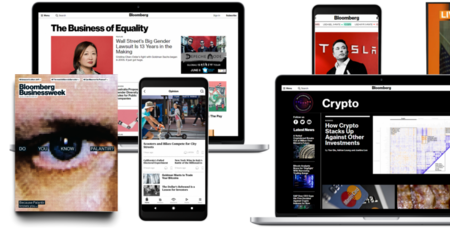(Bloomberg) —
Six years ago, I was in Hawthorne, California, when Elon Musk first unveiled Tesla’s Model 3. The sedan was central to Tesla’s plan to reach less-affluent consumers with a mass market $35,000 car. Scores of people stood in line for hours to plunk down deposits, giving Musk a moment reminiscent of whenever Apple releases its latest iPhone.
All these years later, that $35,000 price point feels like a fever dream. Tesla’s chief executive officer told his 78 million Twitter followers early this week that the carmaker was feeling pressure from inflation in raw material and logistics costs. Tesla then raised prices across its lineup. The base Model 3 in the U.S. is now just shy of $47,000.
I could order the cheapest new Model 3 now, with an estimated delivery date of August. It would be bare bones — pearl white, 18-inch wheels — and cost $46,990 before taxes. Used Model 3s available in my area — many of them longer-range versions — can cost even more. I found a 2020 model with over 25,000 miles on the odometer listed for $63,200.
Rising gas prices are leading a lot of consumers to seriously consider EVs. But there’s an ongoing semiconductor shortage and congestion at ports. Russia’s invasion of Ukraine has thrown an already-fragile supply chain further into turmoil, particularly when it comes to metals like nickel that are key to making EV batteries. Inflation is seemingly everywhere, and Tesla will probably continue to raise prices as long as it’s unable to keep up with strong demand for its vehicles.
According to car-shopping website Edmunds, the average transaction price for a new EV climbed to $60,054 in February — and most of that data was collected before Russia invaded Ukraine. The tax credits the U.S. provides to buyers of new battery-electric and plug-in hybrid electric vehicles are no longer helping Tesla customers because there’s a cap the company exceeded years ago. Efforts to revise how the federal government supports EV purchases remain stalled in Congress. And while smaller state-level incentives remain, they’re not going to be enough for many consumers to counter the sticker shock.
“Making an EV purchase is not particularly easy to do right now amid inventory shortages,” Jessica Caldwell, Edmunds’ chief director of insights, said last week. “Price-sensitive consumers most affected by gas price hikes will likely find that making the switch is also a bit out of financial reach due to the premiums that these vehicles command.”
The second master plan Musk published almost six years ago mentioned making an affordable, high-volume car. The idea was that after the Model 3 and Y, we’d see an even cheaper vehicle. But during Tesla’s last quarterly earnings call, the CEO said the company isn’t currently working on a $25,000 car he’s alluded to.
For most people, a car is their most expensive purchase after a home or college education. A truly affordable EV remains out of reach for huge swaths of people who would gladly make the switch if they could.
More stories like this are available on bloomberg.com
©2022 Bloomberg L.P.











